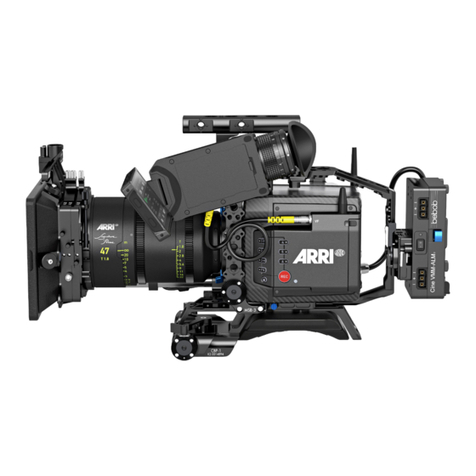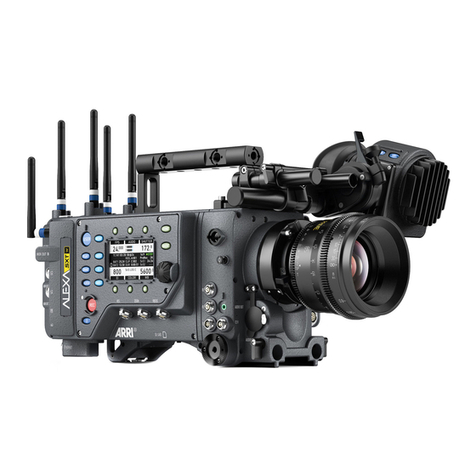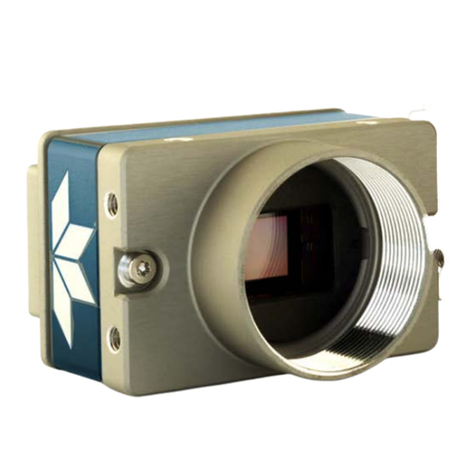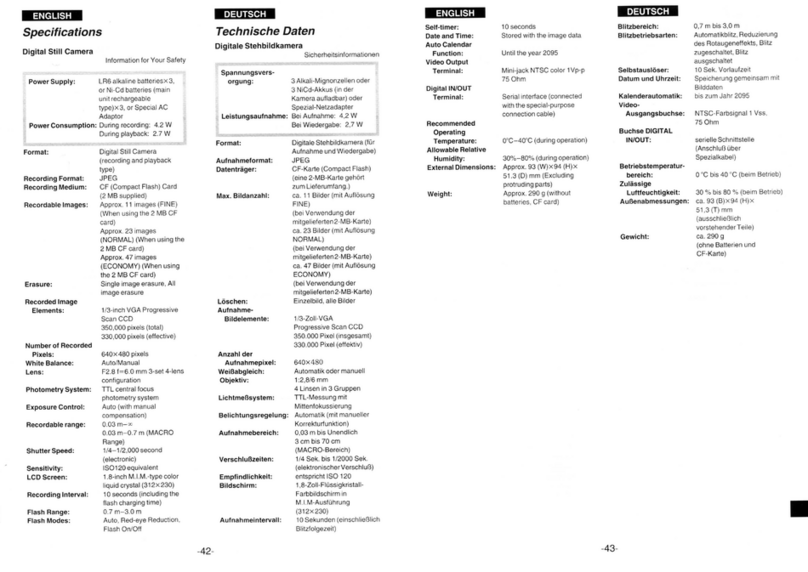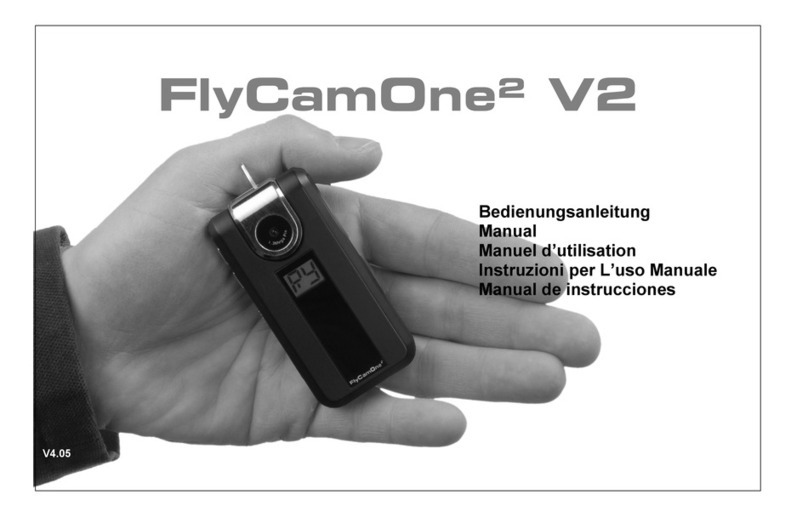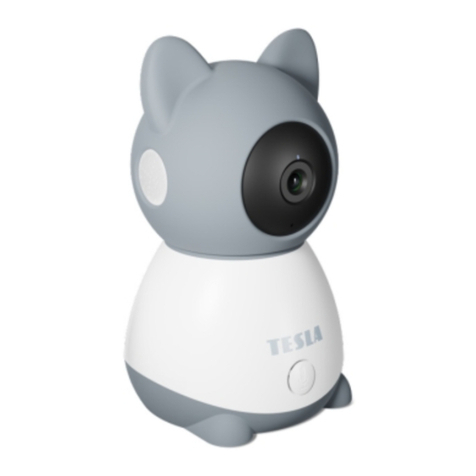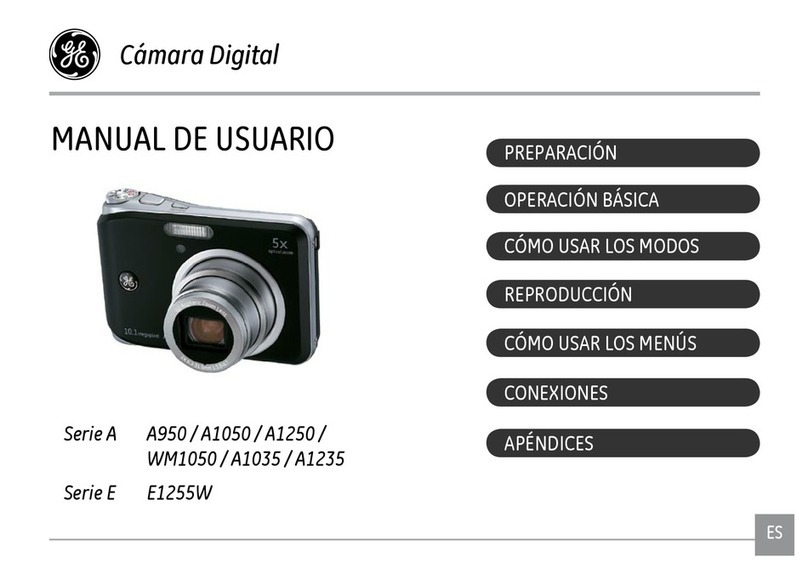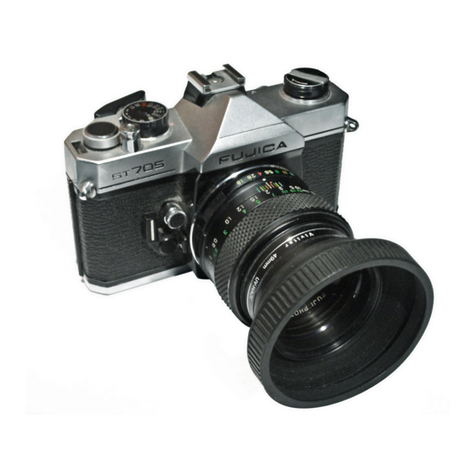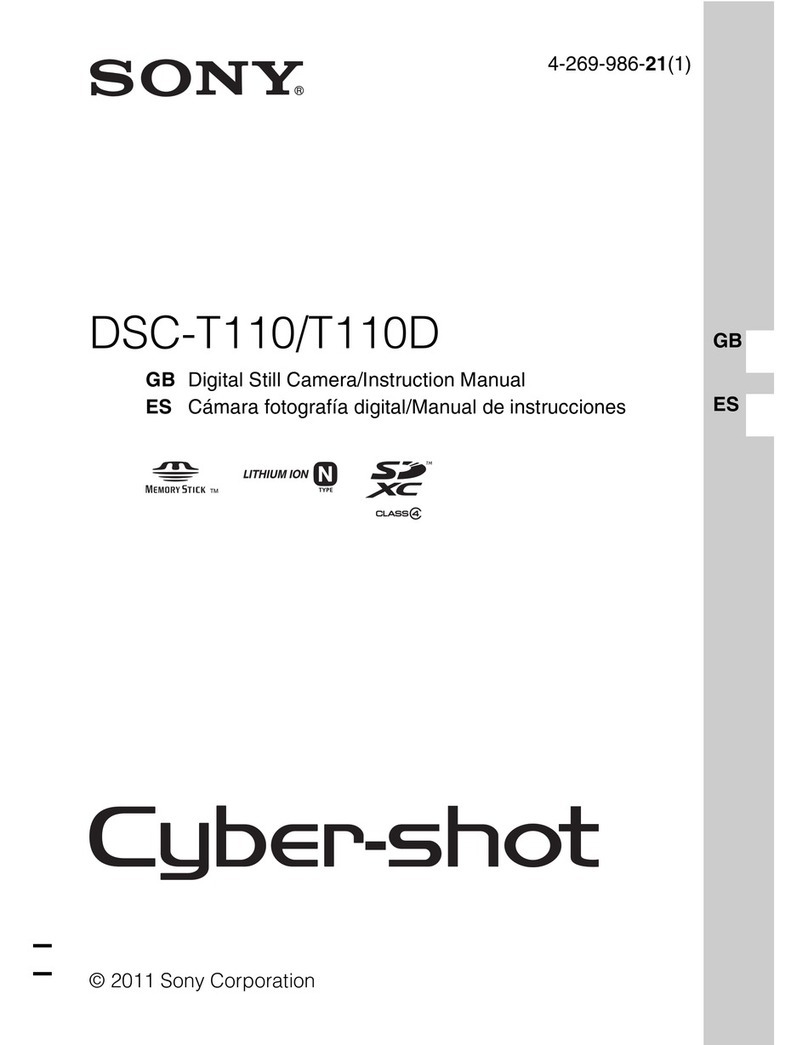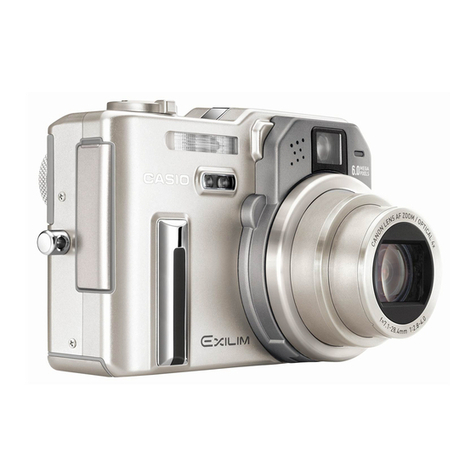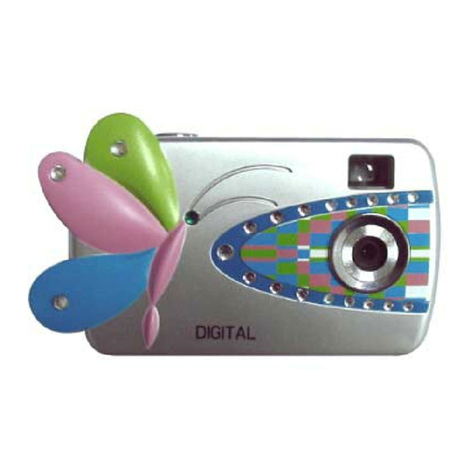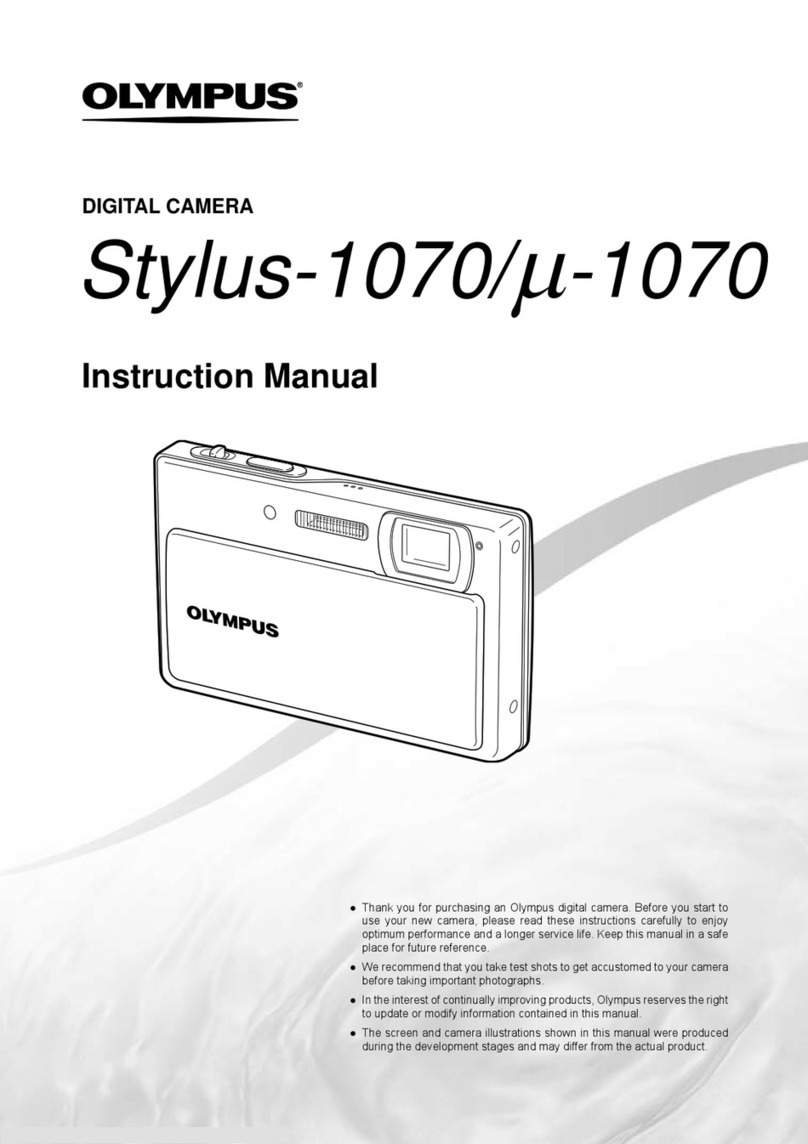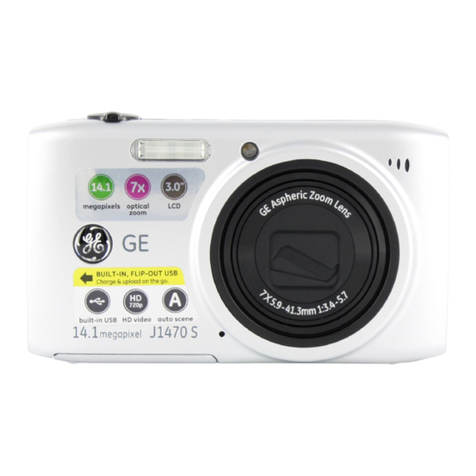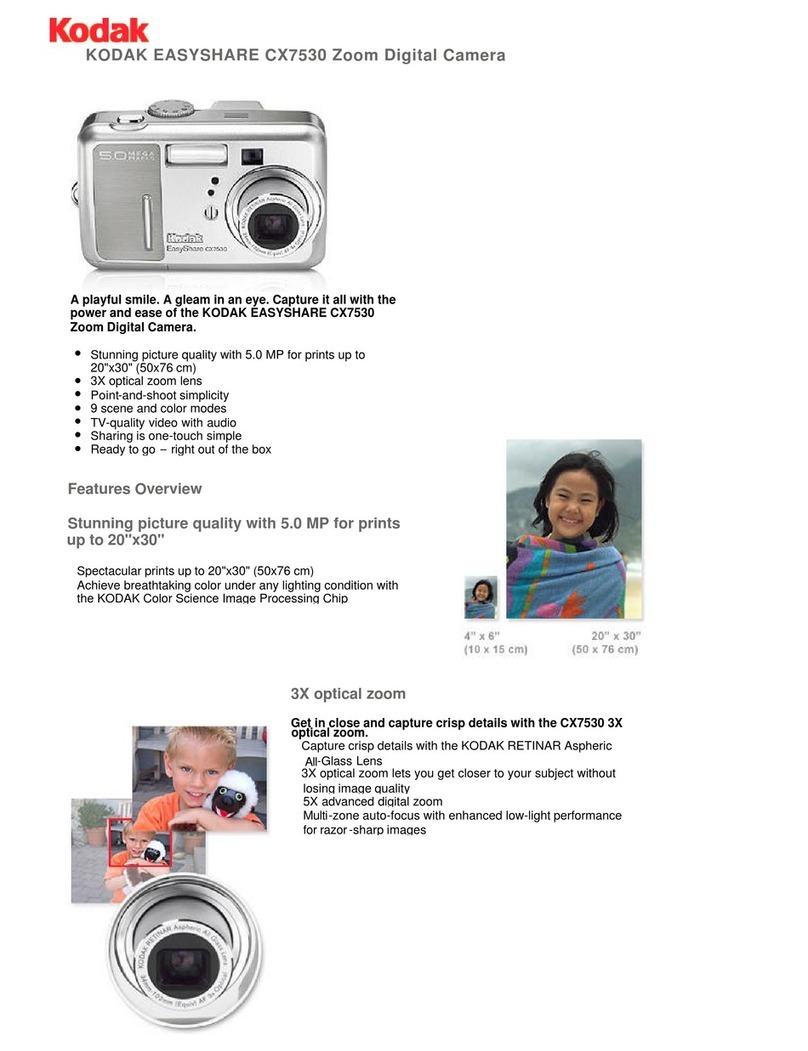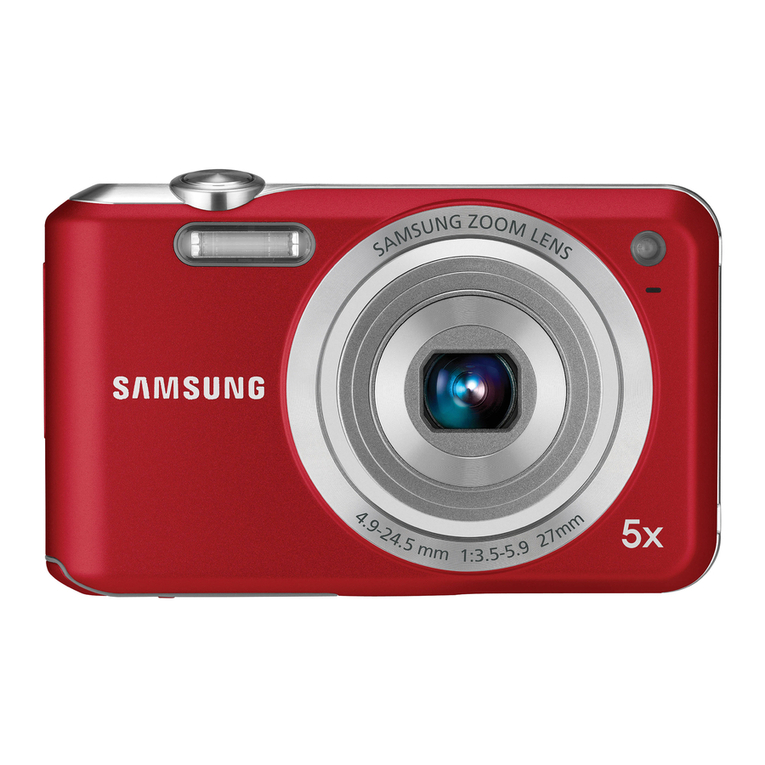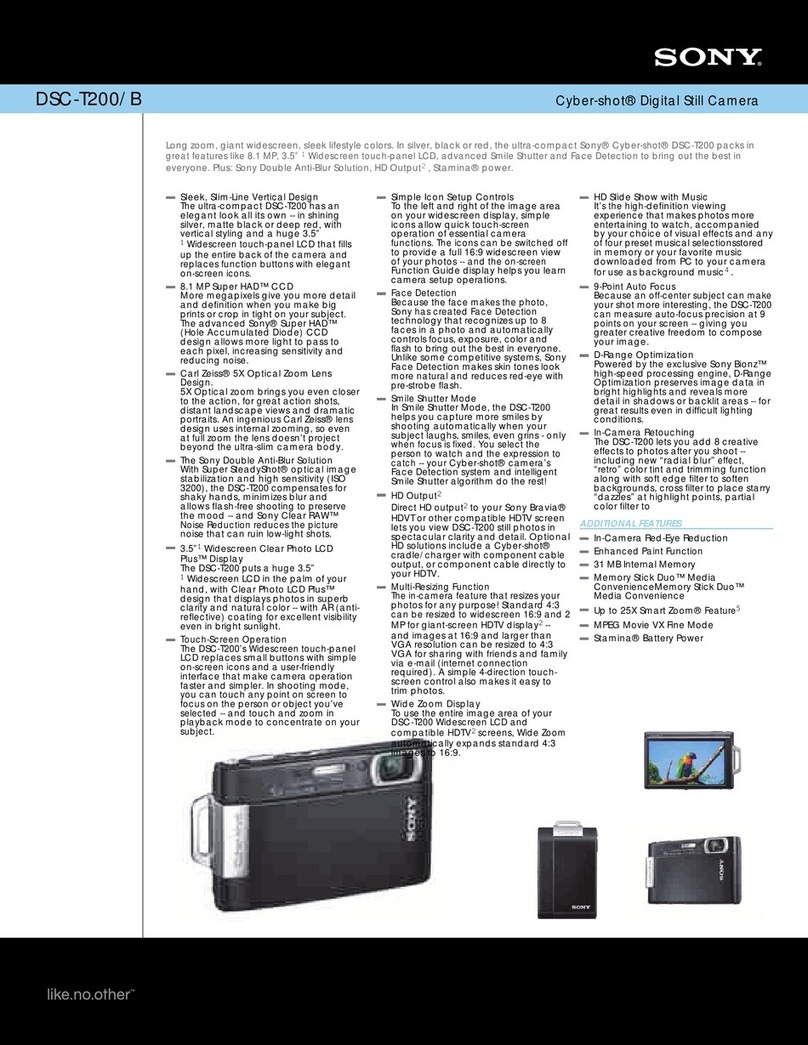ARRI AMIRA SUP 4.0 How to use

RELEASE NOTES
AMIRA SUP 4.0
Software Update Package SUP 4.0.27
Date: May 23, 2016

AMIRA SUP 4.0 Page 2 of 16
Release Notes All data subject to change without further notice.
Table of Contents
A. Introduction ..................................................................................................................3!
New features & changes overview ........................................................................... 3!
Technical Specifications ...........................................................................................4!
B. Update Instructions......................................................................................................6!
Download and Registration Process for software updates....................................... 6!
How to get a Software Update Package...................................................................6!
Camera Update Procedure.......................................................................................6!
C. New Features ................................................................................................................7!
1. Super 16 HD Recording Mode.............................................................................. 7!
2. AMIRA Multicam interface refinements ................................................................7!
3. Support for the Camera Control Panel CCP-1* ...................................................7!
4. Switchable Zoom Position in the Viewfinder......................................................... 8!
5. Extended SDI Metadata........................................................................................ 8!
6. Other improvements: ............................................................................................ 8!
D. Known Issues ...............................................................................................................9!
Accessories ..............................................................................................................9!
Audio....................................................................................................................... 10!
Inputs/Outputs ........................................................................................................ 10!
Media ......................................................................................................................11!
Metadata................................................................................................................. 11!
Playback .................................................................................................................11!
Recording ...............................................................................................................12!
SUP update ............................................................................................................13!
Timecode ................................................................................................................13!
Usability ..................................................................................................................14!
Viewfinder ...............................................................................................................15!
Important Changes and Bugfixes ........................................................................... 15!
Service....................................................................................................................16!

AMIRA SUP 4.0 Page 3 of 16
Release Notes All data subject to change without further notice.
A. Introduction
We are proud to announce the release of the AMIRA Software Update Package 4.0 for all ARRI AMIRA
cameras. This version expands functions for all AMIRA models as indicated below.
SUP 4.0 includes major improvements for AMIRA and we strongly recommend installing this update
at your earliest convenience on all AMIRA camera models.
This document also contains known issues for this software version. Please take your time to go through this
information.
For more information, please visit www.arri.com/amira.
New features & changes overview
•Super 16 recording mode:
Crops and scales the 15.1mm image circle to HD
•Multicam support refined:
Various improvements based on user feedback
•CCP-1 support*:
Can be daisy chained with viewfinder for right camera side display
* Availability and feature setup of the CCP-1 is pending
•Switchable Zoom Position in the Viewfinder:
Select the position of the zoom area using the buttons surrounding the LCD monitor on MVF-1
•Extended HD-SDI metadata:
complete metadata support in the SDI signal
•Recordings with longer exposure time
the camera won’t restrict from using exposure times longer than 1/24 sec any more but display a
warning message
•Transvideo Starlite HD5-ARRI Interface improvements
UI improvements including access to user buttons and playback control
Product Line up
The economical - AMIRA
Features include: HD 1080i & 1080p; Framerates 0.75-100 fps; Recording formats ProRes 422 (LT) and 422
in Rec709; 3 Looks, in camera adjustable image parameters for Knee, Gamma, Saturation & other, focus
and exposure control tools; Intervalometer; Multicam interface; S16 lens mode.
The all-rounder - AMIRA ADVANCED
Features additional to AMIRA: Framerates 100 - 200 fps; Recording format ProRes 422 (HQ); Log C;
Unlimited Look functions; Import Looks; ASC CDL in-camera grading; Dynamic Auto Tracking Whitebalance;
Camera Remote Control; Bluetooth Audio Monitoring; Pre Record function.
The all-inclusive - AMIRA PREMIUM
Features additional to the AMIRA Advanced: 2K (2048 x 1152) recording; ProRes 4444, Import custom 3D
LUTs.
All models can be upgraded with the 4K UHD license

AMIRA SUP 4.0 Page 4 of 16
Release Notes All data subject to change without further notice.
Technical Specifications
Product
AMIRA
AMIRA Advanced
AMIRA Premium
Sensor Type
35mm format ARRI ALEV III CMOS (28.17x18.13)
Sensor Pixel Count
3200x1800 (4K UHD, 3.2K) 2880 x 1620 (HD), 2868 x 1612 (2K), for monitoring with surround area:
3168 x 1772 (HD), 3154x1764 (2K), 3414 x 2198 (4K UHD, 3.2K)
Recording Pixel Count
1920x1080 ProRes HD and HD outputs, 2048 x 1152 ProRes 2K, 3200x1800 ProRes 3.2K, 3840 x
2160 Pro Res 4K UHD and UHD outputs*
Lens Mounts
PL mount w/ Hirose connector and LDS, B4 mount w/ Hirose connector, EF mount, PL mount Titan
(ALEXA Mini)
Shutter
Electronic shutter, 5.0° to 356.0°
Exposure Index
EI 160 to EI 3200 (EI 800 base sensitivity)
Exposure Latitude
14+ stops over the entire sensitivity range from EI 160 to EI 3200 as measured with the ARRI
Dynamic Range Test Chart (DRTC-1)
Audio Recording
4 channels, 24 bit PCM, 48 kHz
Integrated motorized ND
Filters
FSND 0.6, 1.2, 2.1
Sound Level
< 20 dB(A)
Weight
~ 4.1 kg/9.2 lbs (camera body with PL Lens mount)
Dimensions
Length: 309mm/12.1", width: 139 mm/5.4" , height: 149mm/5.8" (camera body with PL lens mount)
Environmental
-20° C to +50° C (-4° F to +122° F)
Viewfinder
AMIRA Multi Viewfinder MVF-1 (OLED and LCD)
Outputs Video
2x HD-SDI outputs: 1.5G, 3G and 6G; uncompressed HD/UHD video with embedded audio and
metadata***
Outputs Audio
3,5mm headphone jack, Bluetooth audio
Outputs Power
Hirose 12pin (for ENG type zoom lenses); 12V: D-tab, Hirose 4pin, Lemo 2pin; 24V: RS 3pin
Inputs
Genlock, HD-SDI**, Timecode (In and Output), all BNC
Other Interfaces
USB 2.0: For importing and storing AMIRA Look Files, user set up files, frame line files and feature
license keys. Stores captured still image formats in DPX (.dpx, 10 bit) or JPEG (.jpg, 8 bit) format.
Stores log files. Also used for installing Software Update Packets (SUPs.; Ethernet LAN RJ-45 for
camera remote control.
Recording Media
CFast 2.0 memory cards
Recording Formats
HD 1920x1080
(interlaced &
progressive)
3.2K ProRes
3200x1800*
4K UHD 3840x2160*
HD 1920x1080 (interlaced &
progressive)
3.2K ProRes 3200x1800*
4K UHD 3840x2160*
HD 1920x1080 (interlaced &
progressive),
2K 2048x1152,
3.2K ProRes 3200x1800*
4K UHD 3840x2160*
Recording Framerates
0,75 - 100 Fps
(progressive) HD, 2K
0,75 - 60 Fps 4K UHD
& 3.2K*
MPEG-2: 23.98p, 25p,
29.97p, 50i, 59.94i
0,75 - 200 Fps (progressive) HD,
2K
0,75 - 60 Fps 4K UHD & 3.2K*
MPEG-2: 23.98p, 25p, 29.97p, 50i,
59.94i
0,75 - 200 Fps (progressive) HD,
2K
0,75 - 60 Fps 4K UHD & 3.2K*
0,75 - 120 Fps HD, 2K in ProRes
4444 XQ
0,75 - 30 Fps 4K UHD & 3.2K* in
ProRes 4444 XQ
MPEG-2: 23.98p, 25p, 29.97p, 50i,
59.94i
Recording Codecs (w/
embedded audio & metadata)
ProRes 422, 422 LT,
MPEG-2
ProRes 422 HQ, 422, 422 LT,
MPEG-2
ProRes 4444 XQ, ProRes 4444,
422 HQ, 422, 422 LT, MPEG-2

AMIRA SUP 4.0 Page 5 of 16
Release Notes All data subject to change without further notice.
Rec709/LogC
Rec709
Rec709 & Log C
Rec709 & Log C
Looks
3 fix Looks (in camera
adjustable)
Complete Look functions; import
Looks
Complete Look functions; import
Looks
Adjustable Image Parameters
Knee, Gamma,
Saturation, Black
Gamma, Saturation by
Hue
Knee, Gamma, Saturation, Black
Gamma, Saturation by Hue
ASC CDL parameter (Slope,
Offset, Power, Saturation)
Knee, Gamma, Saturation, Black
Gamma, Saturation by Hue
ASC CDL parameter (Slope,
Offset, Power, Saturation)
Import of Custom 3D LUTs
-
-
Import of custom 3D LUTs
Focus and Exposure control
Peaking, Zebra, False
color
Peaking, Zebra, False color
Peaking, Zebra, False color
White Balance
Auto WB
Auto WB, Dynamic auto tracking
WB
Auto WB, Dynamic auto tracking
WB
Wifi**** and Ethernet Camera
Remote Control
-
Wifi and Ethernet Camera remote
control
Wifi and Ethernet Camera remote
control
Audio monitoring
Headphone output
(mini jack)
Headphone output (mini jack),
Bluetooth audio monitoring
Headphone output (mini jack),
Bluetooth audio monitoring
Pre Record Function
-
Pre Record function
Pre Record function
Intervalometer
Intervalometer
Intervalometer
Intervalometer
Multicam interface
Multicam interface
Multicam interface
Multicam interface
S16 lens mode
S16 lens mode
S16 lens mode
S16 lens mode
* Requires installed 4K UHD license
** not available in 4K UHD mode
*** embedded audio only in 1,5G and 3G
**** Disclaimer: The camera operator is responsible for enabling wireless camera control. We provide password protection, but please be careful and
diligent in providing this only to authorized production personnel.”

AMIRA SUP 4.0 Page 6 of 16
Release Notes All data subject to change without further notice.
B. Update Instructions
Download and Registration Process for software updates
You can find the Software Update Package (SUP) in the AMIRA Downloads Section on
arri.com/amira/downloads. You have to register your AMIRA camera with your camera serial number to
access the Software Update Package (SUP) download. Existing ALEXA customers with an active ALEXA
account for the download section can use this account, unless otherwise requested.
A SUP can be installed on the camera by using an USB stick as described in detail below.
How to get a Software Update Package
•If you have not registered yet, please go to the AMIRA downloads page at arri.com/amira/downloads and
scroll to the 'AMIRA Software Update Package x.x' section (where ‘x.x’ is the version number of the
desired Software Update Package). Click 'Please -> register to get an account.' The AMIRA customer
registration page will be opened.
•Fill in the requested data and make sure to put in the serial number(s) of your camera(s) in the format of
K1.71700.0-xxxxx. Don't forget to agree to the registration terms at the end of the page.
•When you hit the 'create account' button the system will send you an acknowledgement email with a link to
activate your account. After following the link, a welcome mail is sent containing the login credentials.
Please login at arri.com/login/login.html and navigate to the download section again.
•Upon accessing the software package download you will be asked to agree to the terms and conditions of
that download. The download link is released as soon as you agree to these terms.
Camera Update Procedure
The AMIRA software is updated with an USB stick.
The SUP package will update the AMIRA camera as well as the Viewfinder (MVF-1) as long as the
viewfinder is connected to the camera.
•After the download, please double click the downloaded file (*.zip) in order to unpack it or unpack it
manually. This will place two update files (*.SUP and *.lic) and the SUP 1.1 release notes onto your
computer.
•If not already done, prepare the USB stick for use with AMIRA by connecting it to the camera: please
navigate to MENU>Media>Prepare USB medium & press CONFIRM. This will create the required
folder structure on the USB stick.
•Connect the USB stick to your computer and place the downloaded *.SUP file in the folder
ARRI/AMIRA/SUP on the USB stick.
Then place the downloaded *.lic file in the folder ARRI/AMIRA/LICENSES on the USB stick.
•Make sure the camera is connected to a cable power source, or is powered with a full battery to
avoid power loss during the update process.
•Connect the USB stick to the camera and navigate to MENU>System>Camera update.
•Select the SUP file from the list and press the jogwheel.
•In the following message, press CONFIRM to start the installation.
•Check the audio screen for the update progress.
•After the update process has finished, a success message is displayed on the monitor.
•For a downgrade to a previous SUP version, the license file of this previous version
(amira_fw_update_aes_x.x.x.lic) needs to be available on the USB stick under
\ARRI\AMIRA\LICENSES\.

AMIRA SUP 4.0 Page 7 of 16
Release Notes All data subject to change without further notice.
C. New Features
1. Super 16 HD Recording Mode
The S16 HD recording mode uses a 1600 x 900 sensor cutout and scales it to full HD 1920 x 1080. The S16
HD mode allows the use of Super 16 lenses, like ARRI Ultra 16 lenses on AMIRA. The image circle of the
S16 HD mode is15.1mm which is slightly larger than the usual image circle of 14.5mm for S16 lenses. For
most lenses this should not introduce vignetting in the recorded image area, but individual testing, covering
all lens iris and focus settings, is recommended.
Care must be taken when mounting S16 lenses to AMIRA for the first time. Lenses that reach very deep into
the mount may not work and collide with the cover glass in front of the internal ND filter system. The
available depth is 39.5mm, this does cover lenses that did fit in a standard S16 Film camera.
2. AMIRA Multicam interface refinements
The Multicam interface in AMIRA is continuously optimized, please check for the latest version of the white
paper on the features and functions with your ARRI sales representative.
3. Support for the Camera Control Panel CCP-1*
The CCP-1 is basically a MVF-1 viewfinder without an eyepiece. The CCP-1 can be used in combination with
the MVF-1 viewfinder when it is daisy-chained between camera MVF-1 output and the input on the MVF-1. It
can also be used instead of the viewfinder and provides full access to the UI home screen and menu as well
as a small monitor image. Please refer to the AMIRA SUP 4.0 manual for a description of CCP-1 operation.
* Availability and feature setup of the CCP-1 is pending

AMIRA SUP 4.0 Page 8 of 16
Release Notes All data subject to change without further notice.
4. Switchable Zoom Position in the Viewfinder
When zoomed into the image on the MVF-1 viewfinder, the zoom position in the picture can be selected
using the buttons located around the LCD monitor.
5. Extended SDI Metadata
Metadata like clip name, image settings, looks and much more is embedded in the SDI output signal. A
comprehensive whitepaper is available in the download section for cameras on the ARRI website.
6. Other improvements:
Recordings with longer exposure time
We have removed the strict exposure time limitation and replaced it with a warning. Please note that the
ALEV III sensor in AMIRA is optimized for exposure times shorter than 1/25s and that image artifacts like
individual overexposed pixels can appear when using longer exposure times.
User button for Wi-Fi toggle
Wi-Fi power can be switched on and off using a user button. The status of Wi-Fi power is reflected by the
LED on the camera user button.
Increased number of looks in camera
The number of looks that can be stored in camera has been increased from 20 to 50.
7. Transvideo Starlite HD5-ARRI Interface improvements
The functionality and layout of the touch interface used on the Transvideo Starlite HD5-ARRI has been
improved. The interface has been modified with a more neutral look and feel, and additional functionality has
been introduced. We have added Record Start/Stop, access to the top three user buttons and the ability to
enter playback.

AMIRA SUP 4.0 Page 9 of 16
Release Notes All data subject to change without further notice.
D. Known Issues
This is a list of known issues for this particular SUP 4.0 software Package. For a listing of answers to
frequently asked questions please visit our website at arri.com/camera/amira/learn/amira_faq.
Accessories
• Lens mount change.
When changing the lens mount, please make sure the camera is powered down when you remove or attach
a lens mount. Changing lens mounts with powered up camera can potentially damage the camera
electronics.
• Built-in EF lens image stabilizers are not supported
Built-in image stabilizers in EF lenses are not yet supported.
• SDI embedded timecode with 3G HD-SDI output on some devices
When HD-SDI outputs are set to 3G, some devices may not read the timecode embedded in the signal. No
limitations are seen with timecode output using 1.5G HD-SDI output settings.
Starting with SUP 3.0 the timecode is part of the overlay metadata and can be displayed in the overlay of
EVF, monitor and SDI outputs under “Monitoring/SDI/SDI processing/Overlays/status components”.
• Compatibility issues with some Sigma lenses.
Some Sigma lenses e.g. Sigma (EF) 105 mm f2.8 DG Macro show erratic behavior when controlling IRIS.
Please test EF lenses for correct behavior before using them in production!
• Compatibility issues with some USB devices
You may encounter issues with some USB devices. Please test the device prior to using it for critical tasks,
or use the USB stick delivered with the camera.
• USB devices for AMIRA
AMIRA only supports USB sticks or pendrives. Harddrives or similar will not be recognized. Please see the
manual for more information.
• Lens data for ENG-style lenses using LDS contacts vs. lens camera cable
When using an ENG-style lens, the lens data readout may differ between data from the LDS contacts (and
no lens camera cable connected) compared to a connected lens camera cable.
• Record Start/Stop on Canon HJ18 B4 lens
In case the start/stop function on the Canon HJ18 B4 lens is not working with the ARRI B4 Mount and
connected Hirose cable, please execute a “Reset all” on the lens.
• Re-connecting Bluetooth devices after boot up
Some Bluetooth devices for audio monitoring are not always automatically reconnected when the camera is
booted. Please make sure to manually reconnect your Bluetooth device in this case.
• AUTO IRIS may not work after resolution/codec changes
If AUTO IRIS is used with B4 or S35 "Cabrio" lenses, the auto-manual switch of the lens needs to be toggled
to re-enable AUTO IRIS.

AMIRA SUP 4.0 Page 10 of 16
Release Notes All data subject to change without further notice.
Audio
• Specific behavior on the audio line inputs
The audio line inputs allow a signal of +8dBu max, while the signal attenuation is limited to -6dB max. Please
make sure that your line input does not exceed +8dBu in order to avoid clipping. For higher input levels,
please use an external attenuator or just reduce the signal level.
For cameras including the upgrade to the new audio board (IOAU2) the line input level can be switched to
24dBu. For details on how to activate this mode, please check the AMIRA manual.
• Single audio input cannot be recorded with different levels.
A single audio input can be routed to different recording channels, but the recording levels are the same on
all channels and cannot be different.
• Audio glitches when booting down
Please be cautious of potentially loud audio glitches when wearing headphones while powering down the
camera.
• Headphone output connected to an audio mixer
When the headphone output is connected to an audio mixer for monitoring the audio recording, the audio
board may be damaged if the camera contains the initial IAOU 1 audio board. This would only affect the
volume of the headphone out. If you recognize reduced maximal volume of the headphone output, this may
indicate this damage. Please contact an ARRI service center in this case.
• Battery change with connected AES3 source.
After changing the battery with a connected AES3 source, like a sound mixer, the audio function of AMIRA
may not be initialized properly. An error message may appear like “Switch in undefined position”. Please
reboot the camera in this case with disconnected AES3 source. Using an audio attenuator does address this
as well, please contact ARRI service for more information.
Inputs/Outputs
• 4K UHD/3.2K*: no NTSC frames rates supported on SDI 1
SDI 1 offers only framerates consisting of whole numbers at 4K UHD and 3.2K
• 6G UHD-SDI output*: no embedded audio
The 6G UHD-SDI output does not support embedded audio in the signal stream.
* Requires installed 4K UHD license
• SDI frame rate is not automatically set to project frame rate
Other than the sensor frame rate, the SDI frame rate is not automatically set to the project frame rate. This
may result in "jerky" motion on the SDI out in standby/record as well as in playback.
• No Return-In in 3.2K*, 4K UHD* and S16 mode
The Return-In input is not supported when the camera is in 3.2K, 4K UHD or S16 mode.
• No Return-In in MPEG-2 mode with psf or interlaced signals
The Return-In input is not supported when the camera is in MPEG-2 mode and the return signals are psf or
interlaced.
• HD-SDI genlock is limited to single link HD-SDI 422 1.5G signal
For genlock with HD-SDI, the input needs to be a 1.5G single link HD-SDI signal.
• Limited scaling quality in HD-SDI outputs when recording in 2K
The resulting image quality is considered sufficient for monitoring but may be limited for recording the signal
as the master record. This is due to the downscaling of the 2K resolution to HD. Please set the recording
format to HD when recording HD on the HD-SDI output as master record.

AMIRA SUP 4.0 Page 11 of 16
Release Notes All data subject to change without further notice.
• Switching frame rates back and forth while genlock is active on the HD-SDI input, the sync may get
lost
In the rare case, the framerate of the HD-SDI genlock source is switched back and forth, while the camera is
syncing to that source, the sync may be lost if the camera does not re-sync properly. In this case please
manually trigger a re-sync by e.g. disconnecting and re-connecting the SDI cable.
• Genlock sync accuracy may jitter
When using a genlock source (Tri-Level, BlackBurst, HDSDI or Timecode) for syncing the camera, the sync
can be shifted to match the phase of the source, but it may jitter in the range between 0 and 0.2 us
(microseconds)
* requires installed 4K UHD license
Media
• CFast 2.0 cards need to be erased on SUP 4.0 to be used
Only cards that have been erased on SUP 4.0 will work with SUP 4.0. Cards erased on cameras running
previous SUPs will have to be erased again.
• CFast 2.0 cards with clips recorded on cameras running SUP 4.0 cannot be erased on SUP 3.0
Cards with clips recorded on SUP 4.0 have to be erased on SUP 4.0, but can be used immediately
afterwards on SUP 3.0. Alternatively the cards can be formatted on a PC or Mac and then erased again on
SUP 3.0.
• CFast 2.0 cards formatted on ALEXA XT or SXT will not work on AMIRA or ALEXA Mini
CFast 2.0 cards formatted on ALEXA camera have to be erased again on AMIRA or ALEXA Mini before they
can be used.
• Creation of *_BIN.bin file on CFast 2.0 cards
A file named "*_BIN.bin" (i.e. A001R3VJ_BIN.bin) is being created when recording. This is only for internal
data management and can be ignored.
• CFast card erase with Apple OS X El Capitan
With the Disk Utility in El Capitan 10.11, it is currently not possible to erase CFast cards formatted with
AMIRA. There are workarounds possible with using the Terminal tool, please contact ARRI service. Apple is
informed about this issue.
Metadata
• Camera may generate ALE files with unsupported high project frame rates
ALE files for high frame rate editing modes (48p to 60p) are not supported in AVID Media Composer version
7 and lower.
• Lens metadata in SDI and recorded clips is always metric
Lens metadata in SDI and MXF/ARRIRAW or Quicktime clips is always metric irrespective of lens mapping
or LDS lens used.
Playback
• Entering Playback does not disable peaking
Disable peaking manually before entering playback in case you do not want peaking during playback.

AMIRA SUP 4.0 Page 12 of 16
Release Notes All data subject to change without further notice.
• Interlaced clips jitter vertically if SDI output is not set to interlaced
This only affects playback in SDI, the clip itself is all right. Make sure to always match SDI configuration to
project configuration (e.g. 60i clips played back on 60i SDI output).
• Zebra/false color is disabled during clip playback
The zebra/false color exposure tools cannot be activated during clip playback. Displaying the waveform is
possible in the EVF and on a monitor.
• In Pause mode, interlaced clips only show half vertical resolution
Only playback monitored on the SDI outputs is showing this limitation, recordings are correct.
Recording
• Power loss during record with CFast 2.0 cards.
A CFast 2.0 card may need to be reformatted when it is removed during recording or in the event of a
sudden power loss occurs while the camera is writing to the card. The camera will indicate the error with a
warning message. Please follow the instructions in the warning to avoid damage to the card or further
recordings. No action is required if no warning is displayed.
Please contact ARRI service for more information or if you encounter any further issues.
• SanDisk CFast 60GB card frame rate limitations.
Due to the lower write speed on the SanDisk 60GB cards, the max frame rates are limited at the highest data
rates: ProRes 4444 recording in 2K: 120 fps; ProRes 4444 recording in HD: 137 fps; ProRes 422HQ
recording in 2K: 181 fps. ProRes 422HQ recording in 2K: 181 fps
• SanDisk 120GB or 128GB cards recording in card slot B at very high temperatures with very high
data rates.
Using SanDisk 120GB or 128GB cards at extremely high environmental temperatures well above 40°
Celsius or 104° Fahrenheit, and recording ProRes 4444 at highest frame rates close to 200fps, the card slot
B might be limited in the maximal duration of recording. Please use CFast slot A for longer recordings if the
above conditions are met.
• Error message for maximum clip size.
On very rare occasions, the camera may stop recording and report "Recording stopped - maximum clip size
reached". This can only occur with image content that has very little detail and using a codec with low data
rate like ProRes LT.
• Number of clips limited to 400 clips per CFast 2.0 card
The camera cannot record more than 400 clips on a single card. Please note that the camera gives no
further information but just refuses to record more clips.
• Limited card capacities with SanDisk CFast 2.0 cards
To ensure maximum recording performance in all card states, the capacity of the SanDisk CFast 2.0 cards is
limited by 5%.
• Changing Exposure Index or White Balance during record
When changing Exposure Index or White Balance during record it is possible that a single frame contains
two different image characteristics.
• Recording on other card is not possible during erasing
During card erasing, you cannot record to the second card.
You cannot change any camera settings while cards are being erased.
• Failure while recording
In the very rare case of a failure while recording, the camera will reboot and display a message.

AMIRA SUP 4.0 Page 13 of 16
Release Notes All data subject to change without further notice.
• Vertical image mirroring is applied as clip metadata
Mirroring information is stored as metadata in Quicktime files. MPEG-2 HD MXF files do not support
mirroring via metadata, so the clips appear as recorded when played back externally.
• Limited amount of reels when recording MPEG-2
The maximum amount of reels on one card is limited to 2 reels when recording in MPEG-2. In case a card
has reached this amount, it needs to be erased before it can be used for further recordings. Please make
sure you have copied all content from the card before erasing.
• SanDisk 120GB and 60GB cards
In very rare cases, recording can be interrupted with an error message: “Write failure on recording card (Slot
A)” with SanDisk 120GB or 60GB cards.
• Max frame rate may be limited by the data rate of the CFast 2.0 card
The maximum frame rate may be adjusted by the camera without notification, if the selected CFast 2.0 card
does not provide the data rate required for the selected frame rate.
SUP update
• Do not connect the CCP-1 when upgrading to or downgrading from SUP 4.0
When upgrading or downgrading between software versions 3.1.1 and 4.0.x there might be issues with the
communication during the update when using a CCP-1 and MVF simultaneously.
We recommend not connecting a CCP-1 to the camera, as the CCP-1 is not supported on earlier versions
anyway.
• EVFs and lens mounts need to be updated with camera
Please note that SUPs not only contain files for the camera body but also for the EVF and lens mount. In
order to guarantee flawless performance, be sure to update your EVFs and lens mounts together with the
camera. This also applies to spare parts or additional mounts (i.e. EF mount).
• Firmware update takes longer than usual
Firmware update from SUP 3.0 to SUP 4.0 takes significantly longer than prior updates. Make sure not to
power off the camera during firmware update.
• Time zone/daylight saving time are set to defaults during SUP update
Please make sure to set time zone/daylight after SUP upgrade.
• Camera default setup is reset
When updating the camera with a SUP, the "Default setup" is cleared.
Timecode
• Potential timecode shift after playback
Playing back clips recorded with framerates higher than 30 fps, may cause a slight delay (< 1 frame) in the
synced timecode. Please make sure to check or re-sync the timecode in this case.
• Timecode jam sync with clock tuning
It is recommended to activate MENU > SYSTEM > SENSOR > GENLOCK > TC IN while the camera is
being synced with an external timecode source. This will cause the internal clock to be tuned to the timecode
signal and ensures the camera drifts less vs the timecode source. The quality of the tuning depends on the
quality of the timecode source and the time the source was connected. Please leave the external source
connected for at least 30 seconds. Before disconnecting the timecode source set
Menu/System/Sensor/Genlock back to OFF in order to avoid an error message.

AMIRA SUP 4.0 Page 14 of 16
Release Notes All data subject to change without further notice.
• Syncing the sensor via LTC timecode requires a precision timecode generator
A high precision generator with low jitter is required when using an LTC timecode signal to Genlock the
camera. Devices that work without any problem as a standard LTC timecode source may fail as an LTC
genlock source.
• Syncing two cameras via timecode generated in-camera does not work
Syncing the sensors of two cameras cannot be done by connecting TC out to TC in. Use an external
timecode source instead.
Usability
• Licenses can be removed from the camera menu.
Installed licenses can be deleted in the license menu. This will remove the corresponding function from the
camera. To re-install a license (like AMIRA Advanced or Premium licenses), the appropriate license key for
this individual camera needs to be reloaded. If a camera set was purchased including the preinstalled
license, the license key can be found on the USB stick which was delivered with the camera. If a license was
purchased from the ARRI license web shop, please use the license provided there.
• Loading looks containing a custom 3D LUT require the "AMIRA Premium license"
When attempting to load such a look, it will just fail but no message will be displayed.
• Filename length 28 characters max.
Filenames longer than 28 characters (excluding extension) cannot be loaded by AMIRA, they are neither
seen in the corresponding lists nor can be used.
• Limited number of camera files on USB sticks.
Only a limited number of camera files can be supplied on a USB stick: User Setups: 100; Look Files: 100;
Frame lines: 100; License files: 100; SUPs: 20.
• Only one USB slot can be used at a time
When 2 USB sticks are connected during boot up, the device in slot 1 is ignored and only the device in slot 2
is used. You may use the second slot to power a USB device.
• Do not remove USB sticks during read or write operations
Please make sure a USB file transfer is finished (read or write of user setup, camera log, frame lines, license
keys etc.), before removing the device. An incomplete file transfer can cause corrupt files on the camera or
on the stick.
• "ARRI 709" look file export
If for any reason you may want to export the look file "ARRI 709" to USB, you are suggested to make a
DUPLICATE and just save it under a different name (i.e. "ARRI 709mod").
• Auto iris calculation for EF and ENG lenses
The Auto iris calculation with EF and ENG style lenses is based on the exposure for a neutral gray card.
Use HOME > EI > IRIS > OPTIONS > AUTO IRIS OFFSET to adjust the offset for auto iris.
• Running the SENSOR FPS at a different speed than the PROJECT RATE
The frame rates for sensor and project rate must match to enable audio recording and to create clips that will
play back at project speed (i.e. not in slow or fast motion).
The settings can be checked:
- on the HOME screen, where the project rate is shown behind the time code (e.g. @25p).
- on the FPS screen, where the project rate is shown below the FPS setting, including an notation whether
you are recording at normal speed, slow, or quick motion.
- Non-matching settings will trigger the message "audio recording disabled (FPS)" on the audio screen and a
small crossed-out speaker icon over the audio levels on the viewfinder monitor.
Non-matching settings will also show the FPS icon in the home screen and the EVF/SDI status overlays in
orange. The home screen will show an orange exclamation mark next to the FPS logo.

AMIRA SUP 4.0 Page 15 of 16
Release Notes All data subject to change without further notice.
• Using Zebra and Aperture Peaking in combination may result in false exposure indication
Enabling Zebra and Aperture Peaking in parallel may result in a false exposure indication.
• Framegrab is only available in standby mode
The framegrab to USB function is only available when the camera is in standby mode. It is not possible
during RECORD (incl. PreRecord) and PLAYBACK, or when INTERVAL or STOP MOTION recording is
activated.
Framegrabs are always stored in HD 1920x1080 resolution and use the gamma setting of the SDI output.
• User setups created with earlier SUPs are not compatible with SUP 3.0 or higher
User setups, which have been created with an earlier SUP, can not be loaded into SUP 3.0 (or higher). A
new user setup needs to be created with SUP 3.0 or higher.
• MPEG-2 playback in camera
In some rare cases, playback of an MPEG-2 clip may be interrupted. You can still check the clip in camera
by fast forwarding with various speeds. In doubt, please playback the clip on a computer.
Viewfinder
• Do not cover the viewfinder proximity sensor for a long time!
Please note that constantly covering the proximity sensor (for MVF-1 serial number 2150 and below located
at the edge of the viewfinder close to the eyepiece; for Serial number 2151 and higher or upgraded eyepiece
located within the eyepiece) with tape or similar, can cause an irreversible burn-in on the OLED display!
• For MVF-1 up to serial number 2150 which are not upgraded to the new eyepiece
The viewfinder sometimes may not switch on as it uses a proximity sensor to activate the OLED display only
while the eyepiece is in use. Approaching the MVF at an unfavorable angle may cause it not to trigger
properly.
• ZOOM or SURROUND VIEW at very low framerates
The EVF/MONITOR’s image momentarily fades when either zoom or surround view are activated or de-
activated at very low frame rates (below about 5 fps).
• Heated Eyecup HE-6 is not compatible with the AMIRA viewfinder
When using the heated eyecup, the proximity sensor that activates the OLED display will always be in an
activated state. In this state, the OLED display will not switch off when not in use, and can burn in when the
displayed image does not change over time. This is especially true for status overlays.
Please use the new HE-7 Heated Eyecup instead. This is compatible with all MVF-1 viewfinders starting
with serial number 2151, or viewfinders with the eyepiece upgrade installed.
• Viewfinder may show scaling artifacts 3.2K recording mode
The artifacts are limited to the viewfinder monitoring, they do not affect the recordings.
Important Changes and Bugfixes
• Protection against cross platform CFast 2.0 formatting issues
Only CFast 2.0 cards that have been erased on ALEXA Mini or AMIRA running SUP 4.0 (or higher) can be
used for AMIRA recording. This is for protection against issues caused by different CFast 2.0 formatting
schemes used by other cameras manufacturers. Please see the Known Issues section for additional
information on media handling.

AMIRA SUP 4.0 Page 16 of 16
Release Notes All data subject to change without further notice.
Service
For service purposes the ND filter stage can be moved mechanically with screws at the bottom of the
camera. Please do not turn the screws yourself, as this could severely damage the interior of the camera.
Please contact an ARRI service station for any issues here.
Table of contents
Other ARRI Digital Camera manuals

ARRI
ARRI Hi-5 SUP 2.1 How to use

ARRI
ARRI ALEXA User manual
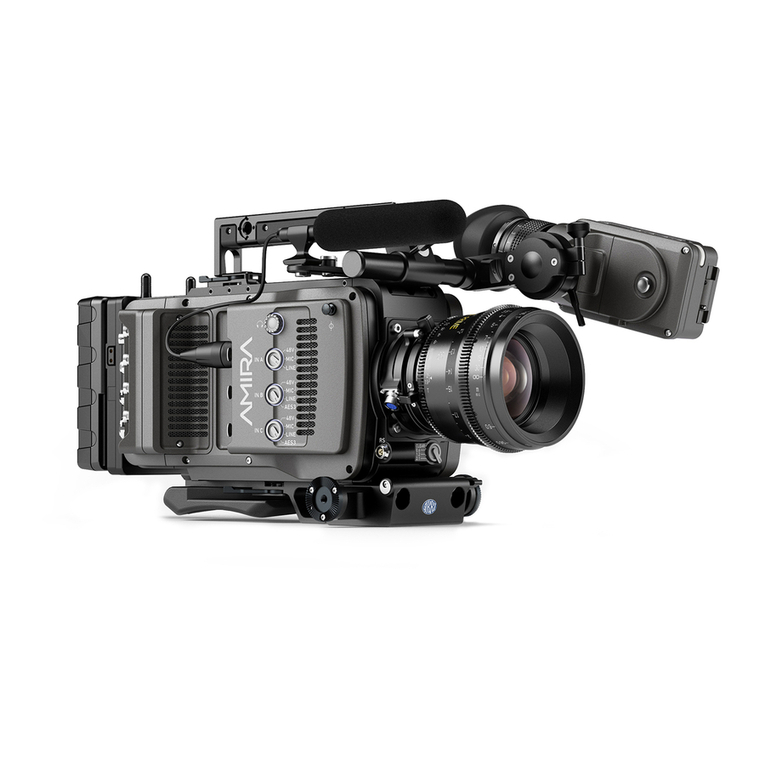
ARRI
ARRI Amira User manual
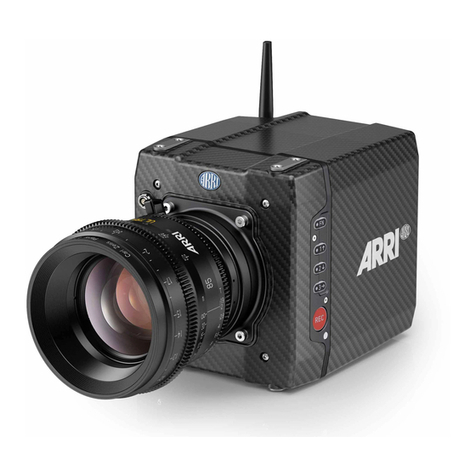
ARRI
ARRI ALEXA Mini How to use

ARRI
ARRI ALEXA Mini User manual
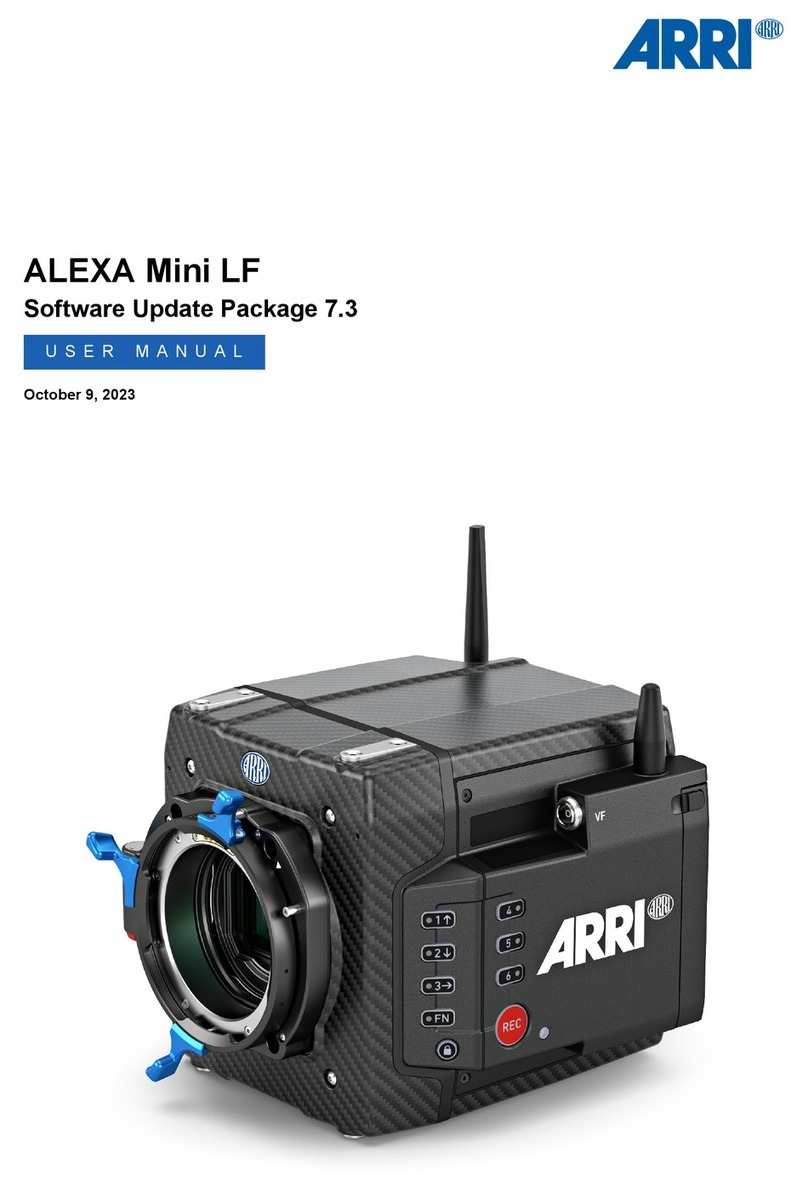
ARRI
ARRI ALEXA Mini LF User manual

ARRI
ARRI Amira User manual
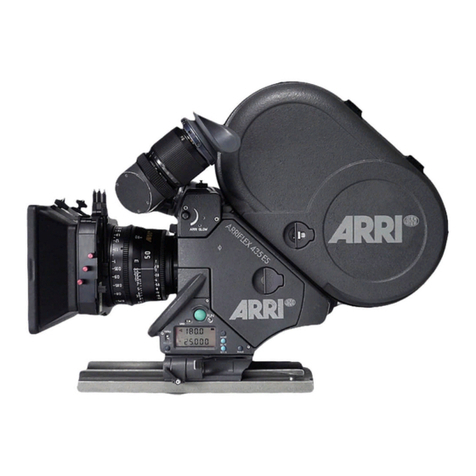
ARRI
ARRI ARRIFLEX 435 XTreme User manual

ARRI
ARRI ALEXA 35 SUP 1.0.3 How to use

ARRI
ARRI AMIRA SUP 6.1.2 How to use

ARRI
ARRI ALEXA 35 User manual
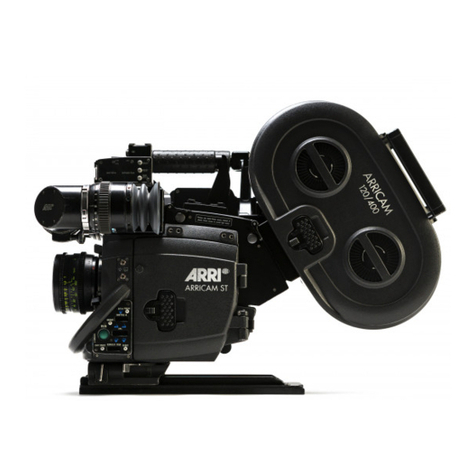
ARRI
ARRI Arricam System User manual

ARRI
ARRI ALEXA User manual
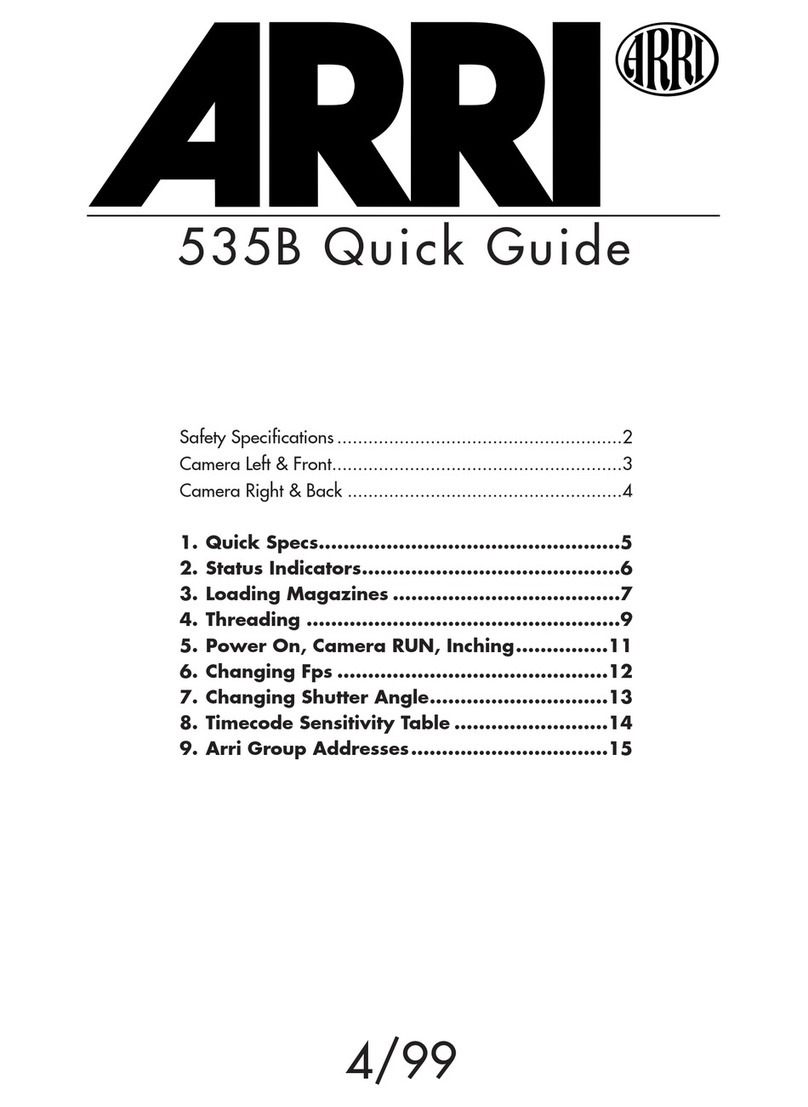
ARRI
ARRI 535B Operator's manual
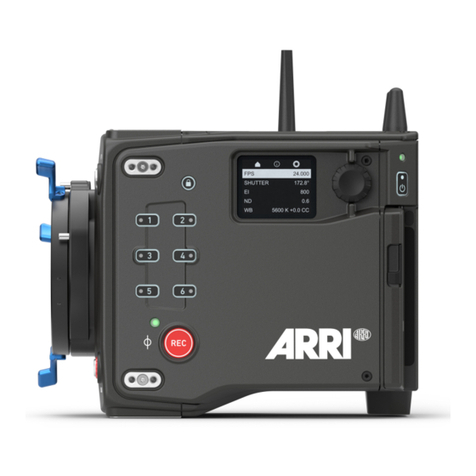
ARRI
ARRI ALEXA 35 User manual
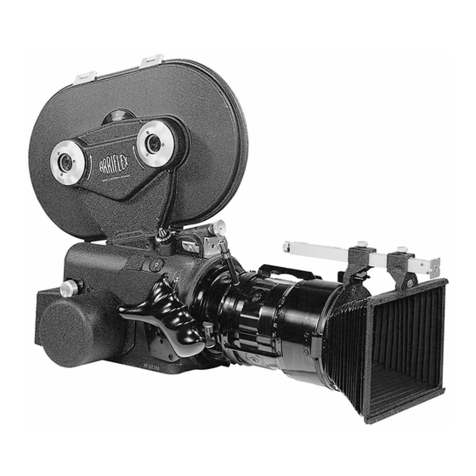
ARRI
ARRI ARRIFLEX 16 BL User manual
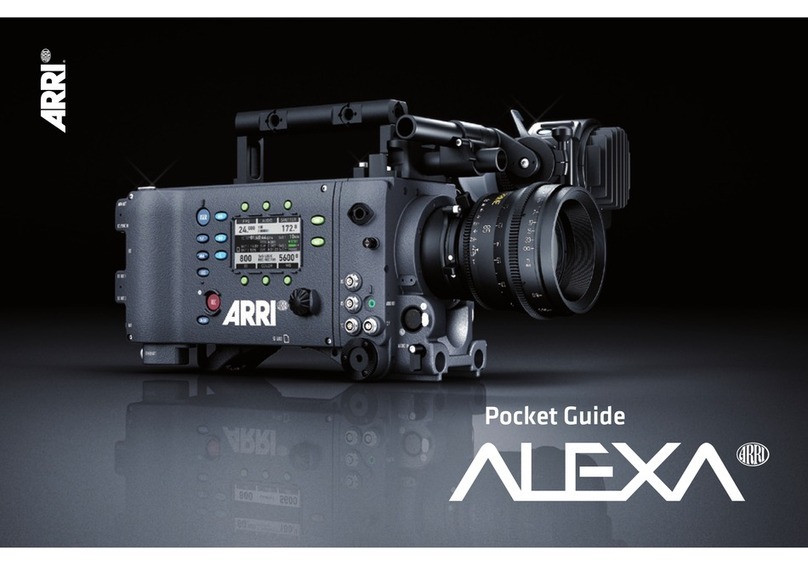
ARRI
ARRI ALEXA User manual
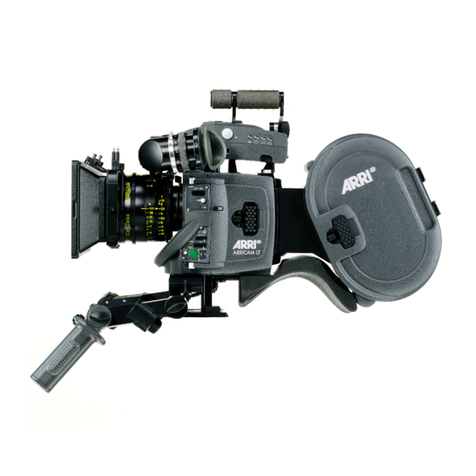
ARRI
ARRI Arricam Lite User manual

ARRI
ARRI ARRIFLEX 435 XTreme User manual

ARRI
ARRI ALEXA User manual
